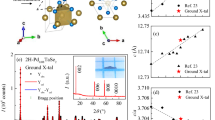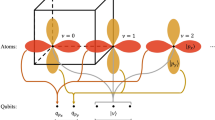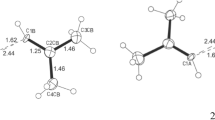Abstract
IN discussing the negative bands of carbon, Deslandres mentions (Comptes rendus, 137, p. 460, 1903) the two strong bands λ2883.86 and 2897.11 which “are very intense, are diffuse on both sides, are of a different structure and otherwise very curious”, and suggests that they may probably be due to oxygen. These bands have also been noticed by Prof. Fowler while studying the comet-tail bands, but he makes no mention of them in his papers. He calls them the “H and K” bands of carbon because of their striking resemblance to the two solar lines H and K. In a recent paper Johnson (Proc. Roy. Soc., A, 108, p. 343, 1925) observes that each of these bands is resolved into two components, and he has allocated two of them to the regular negative band system. This allocation seems to be of a rather doubtful nature, for the structure of these bands is peculiar and they can be obtained alone, unaccompanied by the other members belonging to the same system.
This is a preview of subscription content, access via your institution
Access options
Subscribe to this journal
Receive 51 print issues and online access
$199.00 per year
only $3.90 per issue
Buy this article
- Purchase on SpringerLink
- Instant access to full article PDF
Prices may be subject to local taxes which are calculated during checkout
Similar content being viewed by others
Author information
Authors and Affiliations
Rights and permissions
About this article
Cite this article
GANESAN, A. The “H and K” Bands of Carbon. Nature 118, 842 (1926). https://doi.org/10.1038/118842a0
Issue date:
DOI: https://doi.org/10.1038/118842a0



